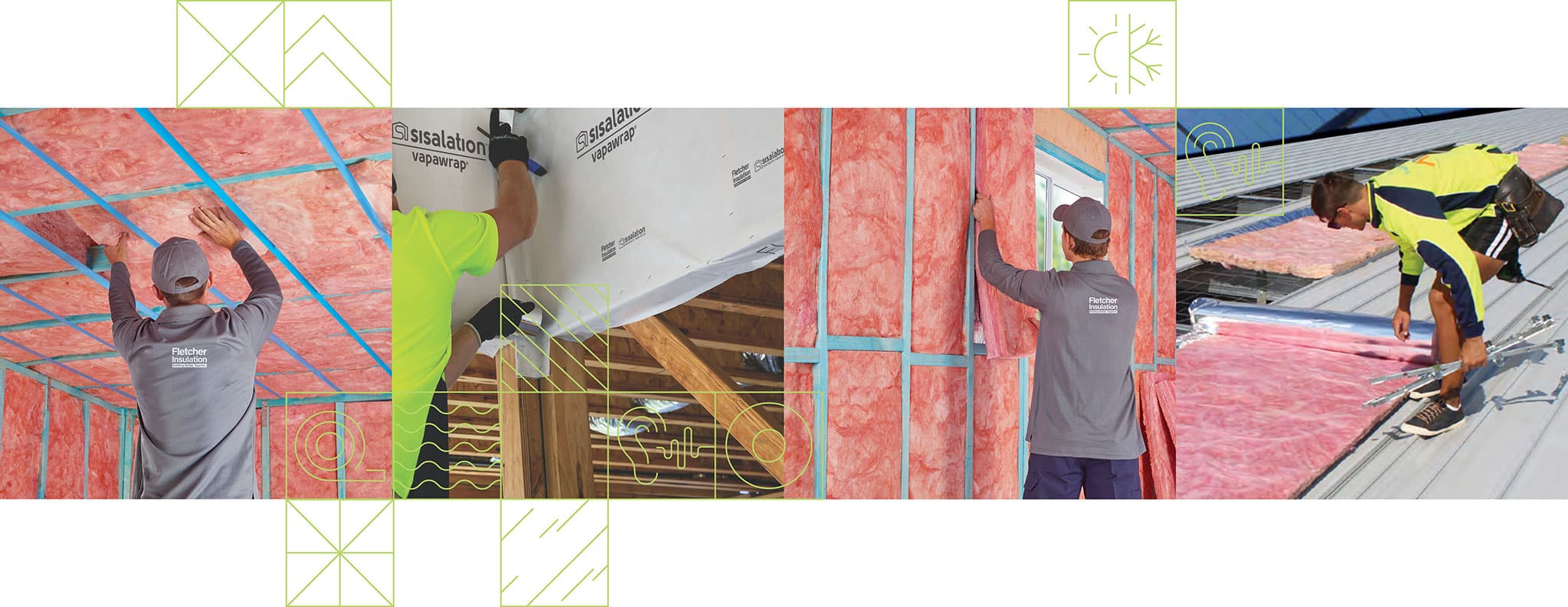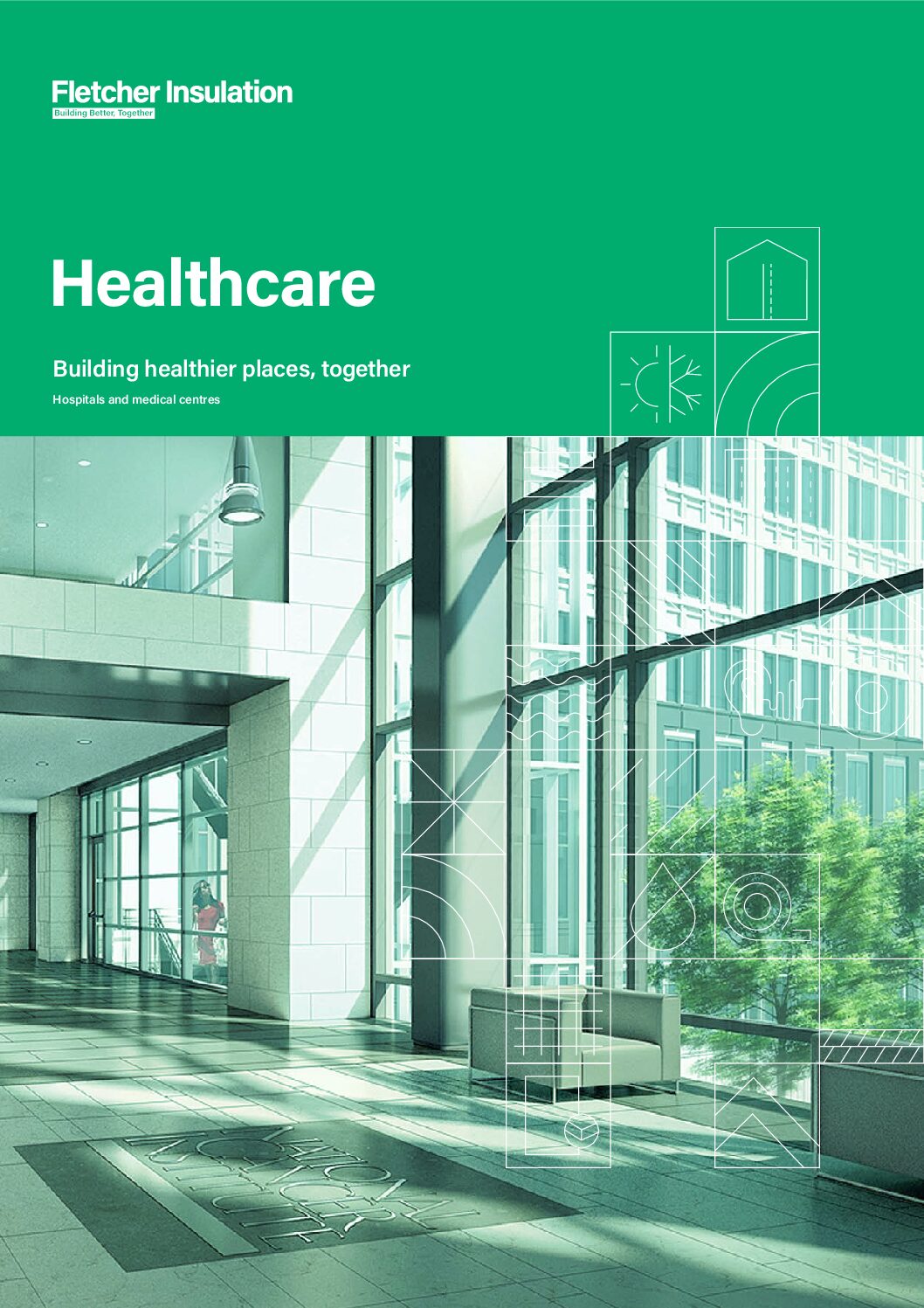Healthcare
Creating sustainable, healthy, and comfortable environments for patients and staff
Insulation plays a crucial role in smart building design within a healthcare environment. It is pivotal in establishing both thermal and acoustic comfort, shaping conditions that are essential for positive patient outcomes. Further, insulation significantly contributes to creating a more comfortable, safe and productive workplace for hospital staff.
Employing our suite of sustainable insulation solutions, spanning walls, ceilings, floors, roof and around services, and in and around HVAC systems, we empower designers to create enhanced, comfortable spaces that promote wellbeing for patients, staff and visitors.
How insulation enhances healthcare environments
Creating an environment conducive to rest, recovery, treatment, consultation, and concentration is paramount in hospitals and patient-care facilities. According to a research review, the quality of indoor thermal and acoustic comfort, as well as indoor air quality, directly impacts patient recovery and staff wellbeing.1
Noise levels in hospitals have been identified as a significant concern affecting patient wellbeing.2 While further research is needed, it is evident that reducing ambient noise and ensuring patient privacy can lead to shorter recovery times, decreased need for analgesics, and increased staff efficiency.3
In Australia, hospitals rank among the most energy-intensive buildings, presenting a considerable challenge in cost reduction.4 It is imperative to optimise the building envelope to effectively manage heating, ventilation, and air quality, thereby contributing to substantial energy savings.
At Fletcher Insulation we’ll help you specify the optimal insulation materials for use in your healthcare building projects.
We provide solutions that contribute to creating:
- a healthier indoor environment for patients, staff and visitors
- reduced energy solutions to control costs and environmental impact
- higher Green-Star ratings and WELL certification
- safe, fire-resistant construction systems
Supporting the wellbeing of people in healthcare environments calls for a holistic approach
The hospital environment is complex. From waiting rooms to intensive care units, emergency departments to operating rooms, each area has its own needs when it comes to thermal and acoustic comfort. An understanding of what comfort levels are needed by patients, staff and visitors within a hospital or other medical facility is a first step for a designer.
And when it comes to insulation, having a technically sound understanding of acoustics, indoor thermal control, air quality, and fire safety requirements is critical.
The importance of acoustic comfort
While all human-centred buildings should be designed for people’s acoustic comfort, medical environments pose challenges for architects and designers.
Noise can be a health risk for patients recovering from an illness or operation. The negative impacts of noise pollution on patients include sleep disturbances, such as reduction of sleep depth, continuity, or duration, as well as cardiovascular response, wound healing, and pain management.5
In most medical settings, background noise is constant. It comes from a variety of sources including air conditioning systems, alarms, medical devices, such as respirators, televisions, and the sounds of people in conversation.
Poor acoustic privacy can also affect a patient’s health outcomes. Not only can increased disturbance and intrusion affect patient healing, it may also lead to people withholding important, perhaps vital information if they feel they’ll be overheard.3
Internal noise levels also take a toll on hospital staff. Consequences include increased stress levels and fatigue, decreased job performance, hearing loss at high noise levels, general annoyance, and an increased rate of job burnout.
Fletcher Insulation products are designed on the principal that quality acoustic design supports the health and wellbeing of all people in our community.
Controlling indoor thermal comfort, air quality and building condensation
A well-managed indoor environment supports the wellbeing of its occupants. But within a hospital, maintaining the health and comfort of patients is a primary purpose.
While there are many factors influencing a patient’s perception of their overall comfort, thermal comfort and indoor air quality are two of the top influences affecting people within a hospital.1
The key to Fletcher Insulation’s approach is to devise a tailored solution for each healthcare project.
We offer a range of insulation solutions that help reduce reliance on artificial cooling and heating systems and improve the indoor air quality.
Working with some of the country’s leading healthcare designers, we’ve supplied insulation solutions for many Australian hospitals.
Protecting people and buildings from fire
Hospitals are like small communities. Designing a hospital to be fire-safe means considering the needs of the people who use it every day and selecting building materials that will help keep them safe.
The use of passive fire protection strategies helps protect patients, staff and visitors should a fire break out. It’s also a best practice approach to mitigating property and equipment damage, and minimising interruption to the delivery of a hospital’s essential services.
Insulation installed in external and internal walls, floors, ceilings, roofs, and around HVAC applications, is an integral part of fire safety control within any hospital building.
As well as National Construction Code (NCC 2019, 2022) compliance, designers and hospital owners must also consider the standards and minimum requirements of insurers. Choosing insulation that fails to meet these specifications could mean higher insurance premiums.
Fletcher Insulation has developed a range of rigorously tested insulation solutions. Made of non-combustible or low flammability materials, our products are designed to keep people and buildings safe. Whatever the specific challenge of your building design, our expert team are on-hand to help designers and specifiers select the best fire-safe compliant solution for your hospital project.
Using Fletcher Insulation’s glasswool products in external cladding, ceilings and internal partition applications ensures your building complies with AS 1530.1 for combustibility.
For the good of the planet
As well as creating a range of energy efficient products to help hospital building owners save energy costs, Fletcher Insulation continues to invest in sustainable manufacturing processes.
We help reduce the carbon footprint of the built environment by:
- Making insulation with zero Ozone Depletion Potential (ODP).
- Ensuring our insulation products support healthy indoor air quality and contain no harmful levels of Volatile Organic Compounds (VOCs).
- Using recycled materials in our manufacturing process wherever possible – up to 80% of the glass used in our glasswool insulation is recycled, transforming a waste product and avoiding landfill.
References are listed in our Healthcare brochure.















